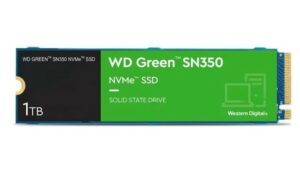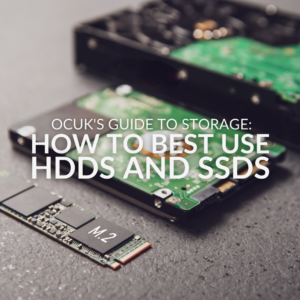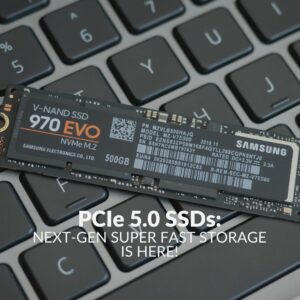High-quality storage is a must in any gaming PC. M.2 SSDs boast fast data transfer speeds and loading times in a small form factor.
If increasing your storage is on your gaming resolution list, then here at Overclockers UK, we have got the guide for you! Our team has compiled everything you need to about M.2 SSDs to help you decide if this storage solution is for you.
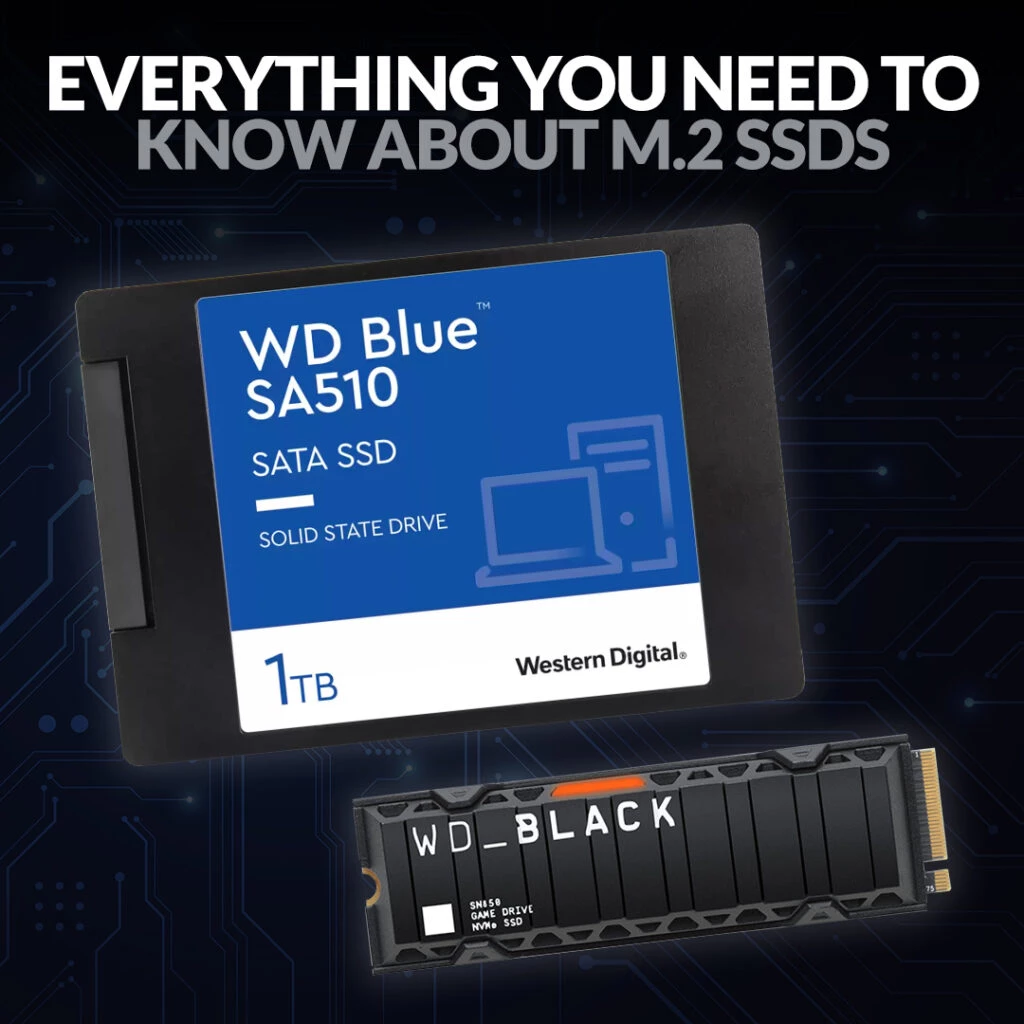
M.2 Solid State Drives:
M.2 is a type of Solid State Drive form factor. M.2 SSDs will require a motherboard with a compatible M.2 slot and utilise either SATA or PCIe.
The size of an M.2 SSD can vary and is often identified by a four- or five-digit number, e.g., a 2260 M.2 is 22mm wide and 60mm long. You can find M.2 SSDs that are:
- 2280 – 22mm x 80mm
- 2230 – 22mm x 30mm
- 2242 – 22mm x 42mm
- 2260 – 22m x 60mm
- 22110 – 22mm x 110mm
Your motherboard will feature a marker, such as a 2280 or 2242. When choosing your preferred SSD, you will have to ensure that your motherboard’s M.2 slot is compatible with the size of your chosen M.2 SSD. You can find this in either the motherboard’s manual or the manufacturer’s website.
SATA M.2 SSD:
SATA M.2 uses the SATA interface.
The SATA interface boasts built-in memory chips to read and write your data. On average these drivers are capable of reaching a maximum data transfer speed of 6Gbps.
Unlike 2.5’’ inch SATA Solid State Drives, M.2 SATA SSDs don’t require any SATA connectors. This makes them a great alternative for those who don’t want cables cluttering up their PC and those with an SFF (small form factor) gaming PC without space for a 2.5’’ drive.
WD Blue SA510 1TB SATA M.2 SSD:
- 500GB storage capacity
- 2280
- 560MB/s read speed
- 510MB/s write speed

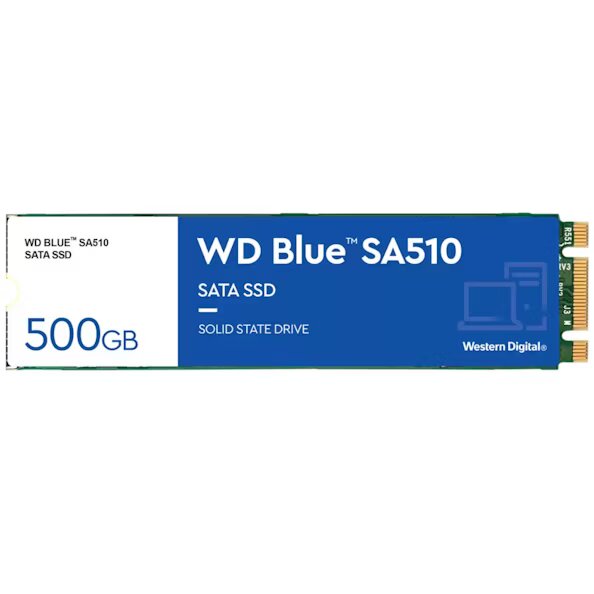
WD Blue SA510 500GB SATA M.2 SSD:
- 1TB storage capacity
- 2280
- 560MB/s read speed
- 520MB/s write speed
PCIe M.2 SSD:
PCIe M.2 SSDs utilise the NVMe interface.
Designed specifically for SSDs, the NVMe interface combines both ultra-fast PCIe connectivity and intelligent non-volatile flash NVMe storage technology. This will allow the SSD to communicate with your CPU directly, to unlock average transfer speeds of up to 20Gbps

PCIe M.2 SSDs are perfect for those looking to enjoy AAA gaming, streaming, and more intensive tasks such as image rendering. Utilising the latest PCIe generations, enjoy a notable boost in performance along with fast loading times, reduced input lag, near-zero latency, and smooth frame rates.
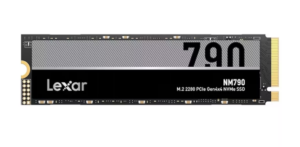
Lexar NM790 1TB NVMe PCIe 4.0 SSD:
- 1TB storage capacity
- 2280
- PCIe 4.0
- 7400MB/s read speed
- 6500MB/s write speed
WD Black SN850X 1TB NVMe PCIe 4.0 M.2 SSD:
- 1TB storage capacity
- 2280
- PCIe 4.0
- 7300MB/s read speed
- 6300MB/s write speed
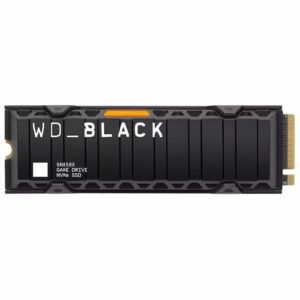
PCIe M.2 Adapter Cards:
If your motherboard doesn’t include an M.2 slot, you can opt for a PCIe M.2 adapter card. These cards will utilise a spare PCIe slot on your motherboard and will contain multiple M.2 slots that you can use to expand your storage space.
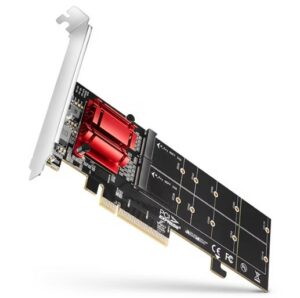
AXAGON PCEM2-ND 2 x M.2 PCIe Adapter Card:
- M.2 PCIe adapter card
- Two M.2 slots
- PCIe 3.0
SATA vs PCIe M.2 SSDs:
Struggling to decide whether a SATA or PCIe M.2 SSD is the one for you? We’ve included all the pros and cons of each M.2 to help you decide.
SATA M.2 SSDs
Advantages:
- Smaller compared to 2.5 SATA SSDs
- Faster than traditional hard drives – average speed of 6Gbps
- No additional SATA cables required
- Cheaper than NVMe M.2 SSDs
Disadvantages:
- Slower compared to PCIe M.2 SSDs
PCIe M.2 SSDs
Advantages:
- Faster data transfer rates – an average of 20Gbps
- Small form factor
- Compatible with most modern motherboards
Disadvantages:
- Often more expensive than SATA M.2 SSDs

